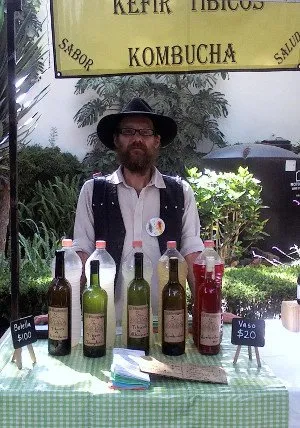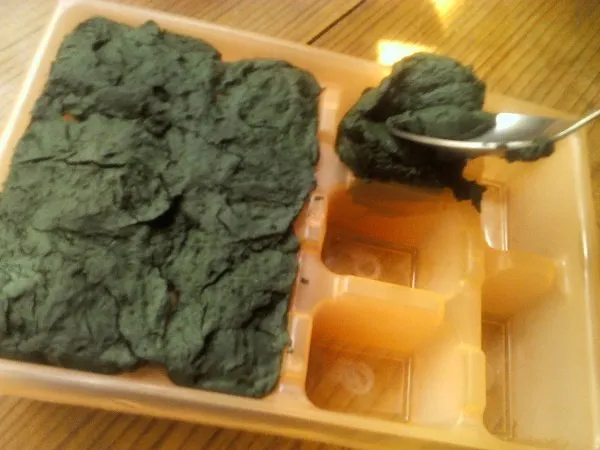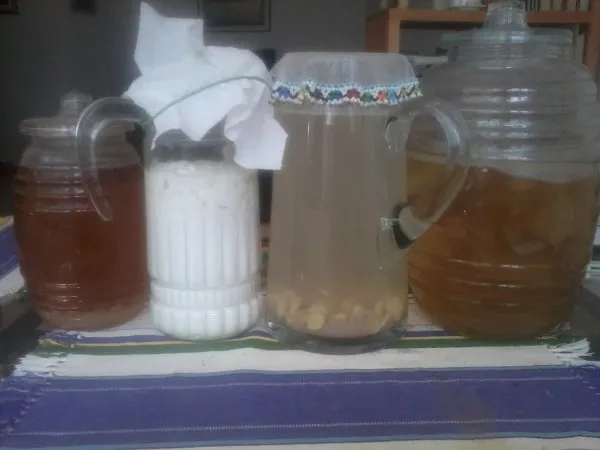A few days ago @sagescrub prompted this writing challenge: What are you doing to claim food sovereignty for yourself or your community, and why? My first reaction was: Nice... but not now! I just returned from a year of absence, so my production is at an all time low. I even have to restart my worm farm, and the only plant in my "garden" is a little basil bush I just got back from a friend who took care of it while I was gone.
But seeing posts, such as this one by @nateonsteemit inspired me to write a post addressing my own situation regarding food sovereignty.
Producing Food in the Urban Zone
As you may know, I live in one of the biggest, vastest, most densely populated city on the American continent: Mexico City. Though in terms of food production there is really not that much difference to any suburban area or small town: if you don't grow food you are just as dependent on the supermarket trucks bringing it in from who-knows-where. Handing over our lives to them (and the entire system they themselves depend on) seems foolish to say the least.
On the other hand, taking part in the production and distribution of the food you eat, along with those around you, tightens the relationship between individuals and strengthens the community as a whole. I think these factors are sufficient reasons to answer the WHY part. So let's see about the HOW:
Options for Limited Space

The Superest of Superfoods
So what's so special about Spirulina? Here I was going to dive into a discussion of the high nutrient content of this blue-green alga (actually cyanobacteria), but since I just saw another fantastic post by a newly found steemian I just curated, I want to let her have the honor: Please check out @strongmalina and her last post about superfoods!
As it turns out, I just received some spirulina culture from a friend of mine, so I can re-start my home cultivation. Instead of the 300 liter tank I showed in this video, I want to grow it in carboys inside my living area. That means, there is a detailed instructional post in its making on how to assemble the home-cultivator... stay tuned for that!
The waiting is over! Behold my detailed instructional post on setting up a spirulina cultivator in your home.

Once it's up and running, I'll have a regular yield of one of the most nutrient-rich substances known. That means, in case the food trucks stop running, I won't starve. Instead I can vegetate on this green, neutral tasting, play-dough-like substance, and will probably die of scurvy, since despite its rich iron, calcium, and protein count, it's still quite low on vitamin C.
Great Supplement ... To Real Food
To achieve actual food sovereignty a couple of further steps are needed. I mentioned my worm-box, right? Originally the idea was to keep my kitchen garbage clean, use my organic waste for something good, and produce some nice compost / liquid plant-food on the side. However, combined with spirulina and black soldier flies (like the ones sold by @quochuy at the Homesteaders Co-op )would fulfill the necessary prerequisites for... something like this!!!
Fish-Food for an Aquaponic System
Out of all the possibilities of growing food in a city, what I consider the most efficient way is aquaponics: Fish fertilize their water, which the plants take up as nutrients, thereby cleaning the water for the fish, and you can eat both of them, preferably together. And using a chopped IBC the way @ligayagardener shows it here is my favorite setup. The only loose end of this nearly closed loop system is the question: what do the fish eat? If you don't want to keep pushing your dependence further out by feeding them industrially produced fish food, you can give them a combination of spirulina, red worms, and soldier flies. I'm getting there... one step at a time.
Most Important Step: Sharing, Sharing, Sharing!
Okay, so once my aquaponic system is up and running, and my fish are growing fat on worms, flies, and nutritious algae, I can... worry about all the other things I need that my home production is not addressing. However, there may be some other folks who dedicate themselves to their production. Getting connected with them is the key, and better sooner than later.

Fortunately there is a nice and vibrant network of local producers right here... okay, just half-an-hour driving from here, though still in Mexico City, at the Mercado Alternativo de Tlalpan where I sell probiotic drinks. Alternatively, there is the new and quickly growing STEEM-based producers' market, I hope to be soon part of, the @homesteaderscoop.
But even without these networks, there are bound to be people in anyone's area who would be interested in your fish, veggies, spirulina, etc. and may also have something they could offer in exchange. With such an inter-personal connection established, and it would be in the interest of the other party that nobody bothers your fish. Because as much as we talk about being independent or autonomous, the key to stability is the INTER-dependence of various individuals on each other.
Please check out these great communities I'm contributing to:

#ecotrain | What is EcoTrain | Discord Community

#cyclefeed | Introducing CycleFeed | Discord Community


Introducing SteemitDreamit | Discord Community